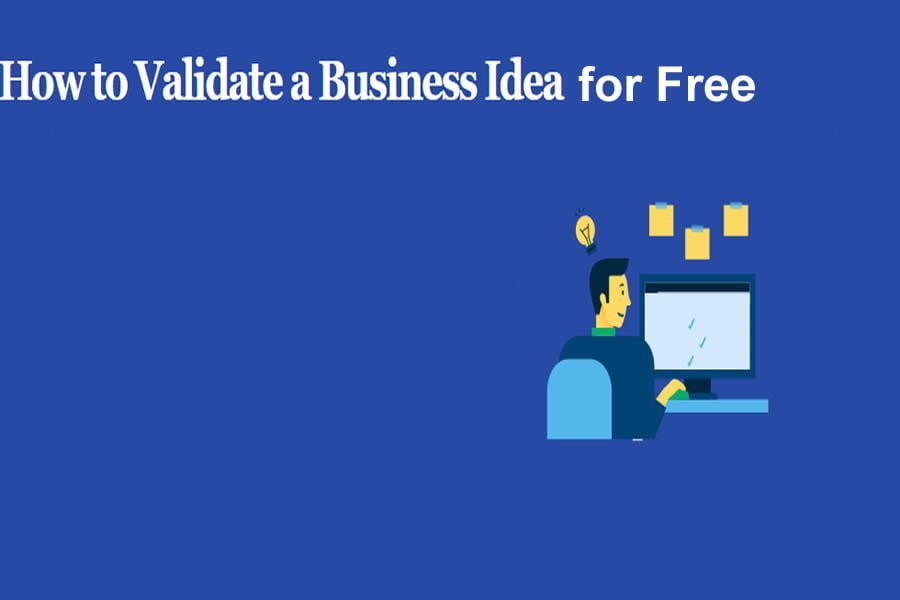There were many instances where I conceived excellent business ideas but failed to implement them. I had a knack for brainstorming new ventures and was confident in their potential success. Yet, without validating these ideas, it was difficult to ascertain their feasibility.
After expressing my enthusiasm with the words, “This idea is excellent!” I simply continued with my daily routine, never taking action on my ideas. The reason behind this lack of execution? I made attempts at various endeavors that ultimately proved unsuccessful, resulting in a waste of both time and money. Consequently, I reached a point where I had grown tired of this cycle.
Many entrepreneurs share a similar journey. They conceive an idea, begin to pursue it, face disinterest, and eventually abandon it. However, entrepreneurship is not merely an action; it is a part of one’s identity.
To stay an entrepreneur, it is important to assess the business potential of your ideas. Luckily, this doesn’t require any financial investment. All you need is determination to achieve success.
Determine if there is a market in place
If no one else is providing the product or service you’re considering, it may not be a profitable concept. However, this doesn’t necessarily make it a poor idea!
When considering the absence of your idea in the world, it may be attributed to one of two factors: either it has not been implemented extensively, or it is not deemed profitable.
When I started digitalbusiness.school, I only needed to look at which business courses were already successful. Imagine if I simply went ahead and created courses at random—stuff that I assumed would be helpful. I would have spent a lot of time and resources doing something that people may not even be interested in learning.
A successful business shows that there’s existing demand. Don’t get me wrong; I’m not saying you should just do what everybody else is doing. It’s still important to stand out and offer something different.
To increase the odds of business success, you want to know what kind of business actually generates money.
Just because you see a few positive responses on a social media post about a product doesn’t mean people will actually buy it. This is cliché, but actions speak louder than words. And an existing business with paying customers shows that people really want and need that product/service. You don’t need to spend a dime to do this type of research.
Step 2: Soundboard your idea with entrepreneurs
The definition of a sounding board is “a person or group whose reactions to suggested ideas are used as a test of their validity or likely success before they are made public.”
I always want to talk to people who have done something similar in the past; people who have gone through the same problems, and who can now give you practicable insights on what to do and what to avoid.
You will always make mistakes in your business journey, but it helps to avoid the usual errors that others made before you. That’s my favorite way to learn. You can Google things and try to learn everything on your own, but a community can significantly improve your learning curve.
So, where can you find these entrepreneurs to soundboard your idea with? If experienced business people are surrounding you, then you’re lucky. But many of us can only rely on friends and family who may not be as business savvy as needed. This is where online communities can help. You can reach out to forums or social media groups who are in line with your business interests.
Many of the existing online communities don’t really suit me though. So I created a community inside my online courses. I wanted someplace where like-minded people can connect with depth and genuine connection.
You can create your own community or reach out to entrepreneurs one-on-one. It’s mind-boggling to me how few people actually ask others for advice. Honestly. Just ask people for advice! Most people are happy to share their experiences.
Step 3: Create a landing page and get signups
Let’s say your idea has an existing market and people are actually paying money for similar products/services. And you came up with a unique offering that’s different from what’s available. Then you’ve asked fellow entrepreneurs, received good feedback and applied everything you learned.
Your business idea has potential. Now, you want to see what your potential customers will do. Will they be interested enough in your product/service to go through the trouble of signing up for your waiting list? To put this step into practice, you need two things:
1. A landing page
This is where you’ll convince people to sign up. It should be sending the right message and showcasing your product/service in the best possible way. You cannot mess this up. Your idea won’t reach (much less convince) anyone if your landing page sucks. There are many tools you can use to create a landing page for your idea.
Here’s an example of the landing page for my course, digitalbusiness.school. If no one signs up for the waitlist, I know it’s a dud. But if about 10% of the visitors actually sign up for the waitlist, I know I’m heading in the right direction.
2. An email provider
You also need an email provider to capture those emails. I highly recommend looking for a service with good automation and efficient campaign planning features. I’ve been using ConvertKit for some time now. It’s great. But most of the popular solutions will do.
Remember to use the free trials that nearly all software companies offer! Before I started my blog, I tested out a lot of different solutions. I would just sign up for a free trial and tried to test my idea within the 14-day or 30-day trials. It also gives you a sense of urgency. Look, when you’re not generating cash with your business, you want to stay practical. Avoid wasting your money. When you validated your idea, you can always pay for the software.
Step 4: Launch an MVP
Your idea has been tested and people are signing up for your waiting list. Here’s where most internet entrepreneurs screw up. They take too much time to launch their product or service. They get in their own way. Does this sound familiar?
I’ve been there many times. I always thought I needed more time to “perfect” the product. Another classic one is, “I need to do more research.”
Nope. You need to launch. Simply create a minimum viable product. Emphasis on minimum—not the most perfect and best product in the world!
Just work on the customer experience. This may not sound like a very big deal at first, but a page that loads too long or a shopping cart that loops in an error can easily discourage a buyer.
You want everything to be professional and seamless. People can easily access my courses and books on the website because I use Kajabi (they also have a free trial). This tool is very helpful for non-coders who simply want to focus on their product, without having to deal with the technical headache.
Conclusion
Effective ideas cannot thrive independently. It is alluring to daydream about the freedom and financial stability that comes with owning a business. However, ideas that appear promising in our thoughts may not necessarily translate into success in practice. Therefore, if you genuinely aspire to pursue your idea, the most prudent course of action is to promptly experiment with it in the actual world. This approach will significantly enhance your chances of achieving genuine success.
dariusforoux

